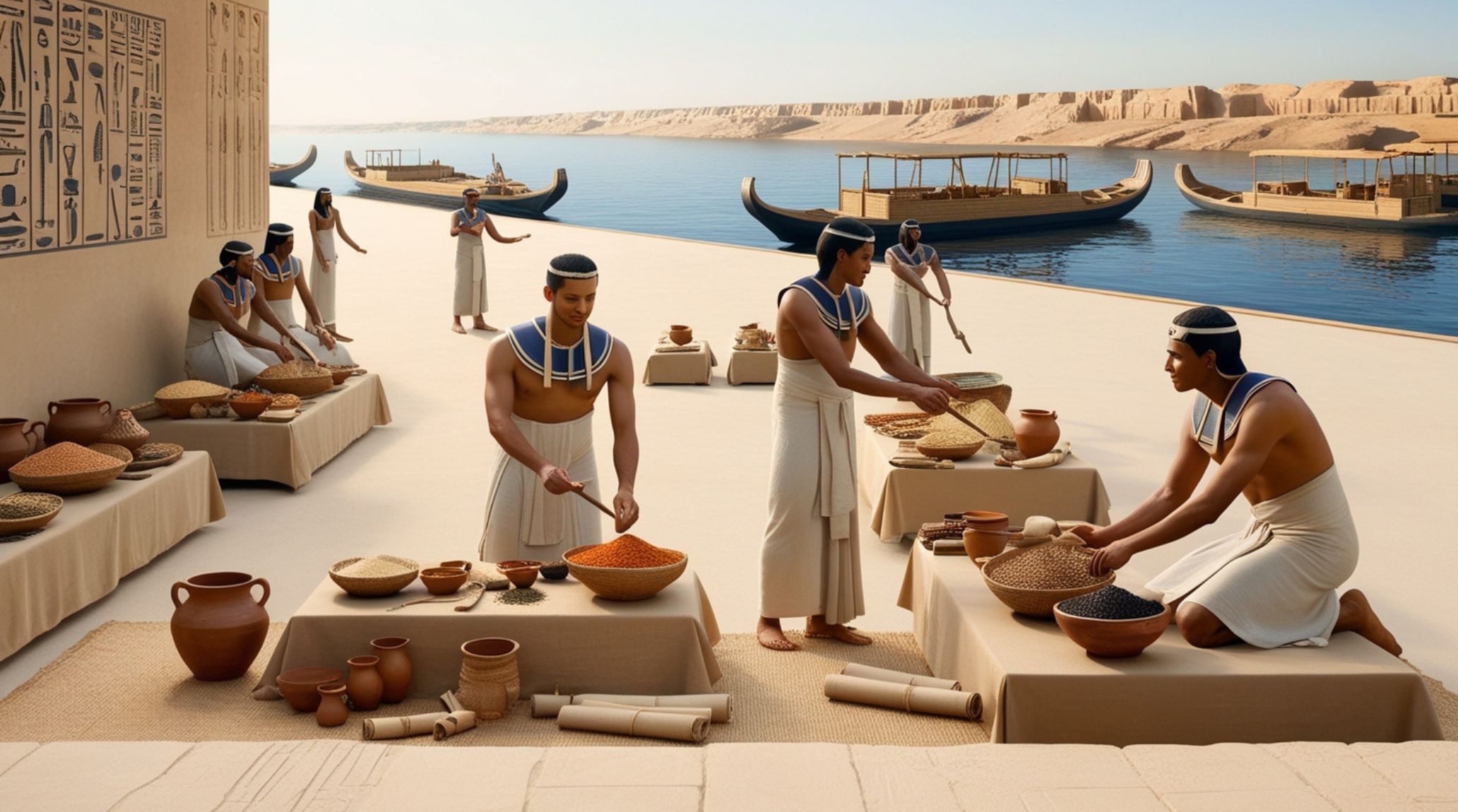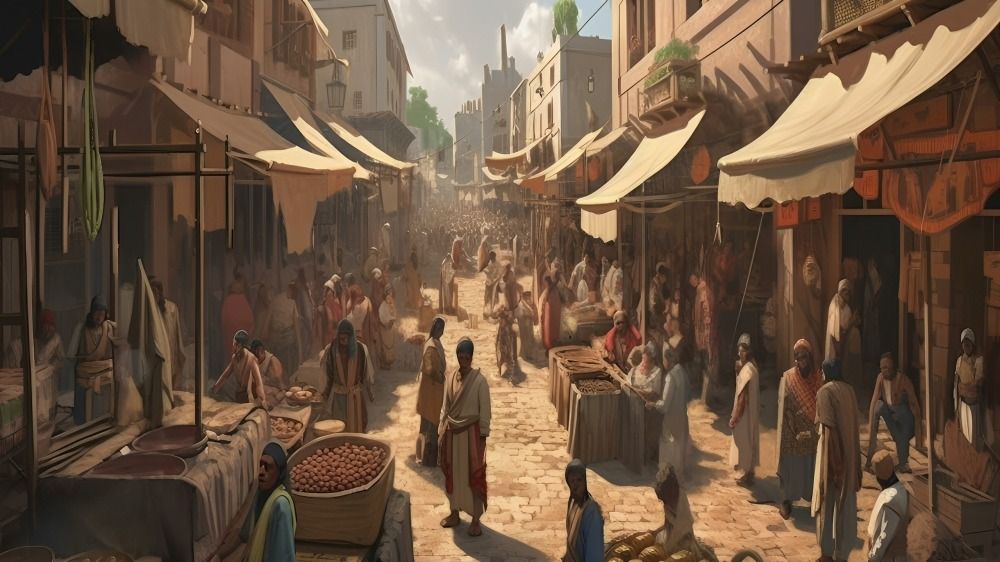
“
The economy of Ancient Egypt was a complex and vibrant system that supported one of the most advanced civilizations of the ancient world. This article delves into 20 fascinating facts about Ancient Egyptian trade and economy, offering insight into how this ancient civilization managed its resources and engaged in trade.1
1
”
Ancient Egypt's strategic location along the Nile facilitated trade with neighboring regions. Trade routes extended across the Near East, Africa, and the Mediterranean, allowing Egypt to exchange goods and cultural influences. 1
Egypt was renowned for its production of papyrus and linen. Papyrus, used for writing, and linen, used for clothing, were highly valued commodities exported to Greece, Rome, and beyond. 2

Egypt had vast gold resources, especially from Nubia. Gold, along with other precious metals like silver and copper, was central to trade and played a significant role in their economy and jewelry-making.
While currency was not widely used, Egyptians often bartered goods and services. Items such as grain, livestock, and textiles were commonly exchanged in trade transactions and local markets. 3
The land of Punt, located in the region of modern-day Somalia or Eritrea, was a significant trading partner. Egyptians imported exotic goods like incense, myrrh, ebony, and ivory from Punt, which were highly prized for religious ceremonies. 4
Egyptian elites enjoyed luxury goods imported from distant lands, including fine wines from Greece, spices from Arabia, and lapis lazuli from Afghanistan. These items were used for personal adornment and ceremonial purposes.5
Egyptians conducted mining expeditions to procure valuable resources. Expeditions to the Sinai Peninsula and Nubia were essential for acquiring minerals such as turquoise and copper, crucial for trade and industry. 6
Egypt's access to the Mediterranean Sea enabled maritime trade. Egyptian ships sailed to regions such as Crete, Cyprus, and Phoenicia, bringing back goods like wine, olive oil, and timber. 7
The economy was largely controlled by the state, with the Pharaoh overseeing major economic activities. State monopolies on certain goods ensured that trade and resources were centrally managed and redistributed. 8
To manage agricultural surplus and ensure stability, Egypt built extensive granaries. These granaries stored grain to be used in trade or during times of shortage, playing a crucial role in economic stability. 9
Pharaohs often sent official trade missions to establish and maintain relationships with other nations. These missions helped secure valuable resources and establish diplomatic ties. 10
Egypt had a thriving crafts industry, producing goods such as pottery, jewelry, and textiles. Skilled artisans created products that were both traded locally and exported to other regions. 11
Festivals and religious ceremonies often featured economic exchanges. Offerings and tributes were made to deities and temples, which also served as a form of economic redistribution. 12
Scribes played a critical role in managing trade and economic transactions. They kept meticulous records of goods, trades, and taxes, ensuring that trade activities were accurately documented. 13
Conquered regions or vassal states paid tributes and taxes to Egypt. These payments were made in the form of goods, such as grain or livestock, and were a significant source of wealth for the Egyptian state. 14
Diplomatic relationships often included economic agreements. Marriages between Egyptian royalty and foreign rulers helped secure trade deals and alliances that benefited both parties economically. 15
Egyptian textile production was advanced, with linen being a major export. Weavers produced fine fabrics that were sought after in foreign markets for their quality and craftsmanship. 16

Local markets were vibrant centers of commerce. People traded everyday items like bread, beer, and vegetables, contributing to a bustling local economy and supporting community needs.
The annual flooding of the Nile had a profound impact on the economy. Flooding enriched the soil, leading to abundant harvests, which in turn boosted trade in agricultural products. 17
Egypt’s alliances with powerful neighbors, such as the Hittites and the Mitanni, facilitated trade. These alliances helped secure trade routes and access to valuable resources not found within Egypt’s borders. 18


